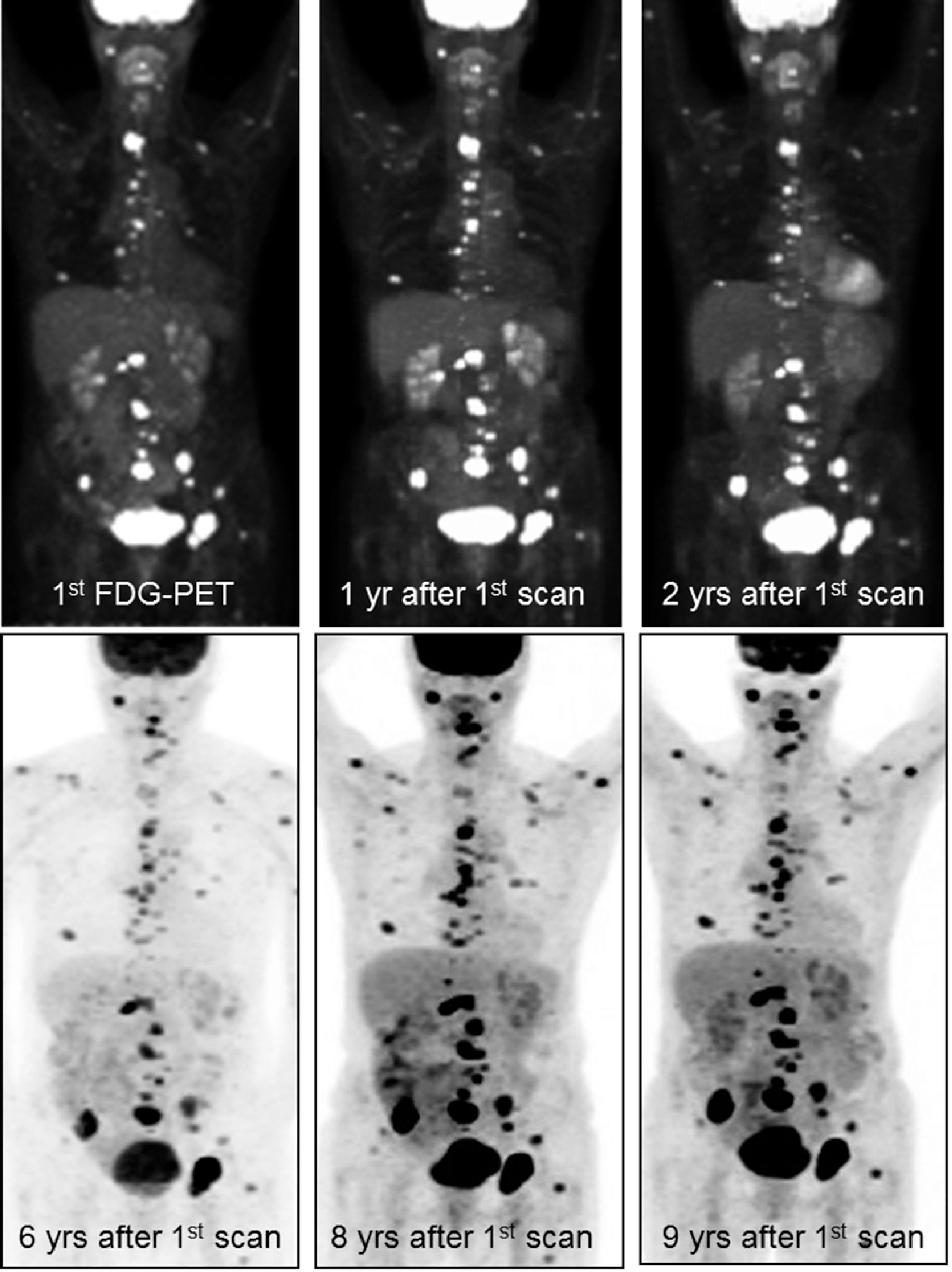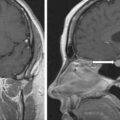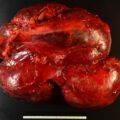There is no cure for metastatic pheochromocytoma or paraganglioma (PPGL). The first step in the management of metastatic PPGL is to assess the rate of tumor progression and, once determined, provide a proportionate treatment. Herein we demonstrate with a case that although the patient had widely metastatic disease, the rate of progression was slow and minimal therapy was indicated.
Case Report
The patient was a 65-year-old woman seen in endocrine consultation for metastatic paraganglioma (PGL). Twenty years previously (at 45 years of age) she had a 3-cm right carotid body tumor resected. It was clinically nonfunctioning. She had no follow-up neck imaging. Recently she had a pelvic computed tomography (CT) scan performed that incidentally detected multiple boney metastases. Biopsy confirmed metastatic PGL. A F-18 fluorodeoxyglucose (FDG) positron emission tomography (PET)-CT scan showed extensive FDG-avid sclerotic skeletal metastases involving the axial and proximal appendicular skeleton as well as a number of ribs and the right mandible ( Fig. 47.1 ). An I-123 metaiodobenzylguanidine (MIBG) scan showed no uptake in the metastatic PGL. She was asymptomatic and felt well. She went on exercise walks daily and exercised on an elliptical machine for 40 minutes 4 days per week. On physical examination her body mass index was 21.3 kg/m 2 , blood pressure was 127/74 mmHg, and heart rate was 65 beats per minute. There were no areas of tenderness to palpation. She had received multiple opinions and recommendations on treatment options to pursue and seeks another opinion on best management.

INVESTIGATIONS
The laboratory tests confirmed that the metastatic PGL was biochemically nonfunctioning ( Table 47.1 ).
| Biochemical Test | Result | Reference Range |
| Sodium, mmol/L | 143 | 135–145 |
Potassium, mmol/L | 4.2 | 3.6–5.2 |
Creatinine, mg/dL | 0.7 | 0.6–1.1 |
Plasma metanephrine, nmol/L | <0.2 | <0.5 |
Plasma normetanephrine, nmol/L | 0.9 | <0.9 |
Plasma norepinephrine, pg/mL | 450 | <750 |
Plasma epinephrine, pg/mL | <25 | <111 |
Plasma dopamine, pg/mL | 10 | <30 |
24-Hour urine: | ||
Metanephrine, mcg | 107 | <400 |
Normetanephrine, mcg | 389 | <900 |
Norepinephrine, mcg | 68 | <80 |
Epinephrine, mcg | <2 | <20 |
Dopamine, mcg | 156 | <400 |
Stay updated, free articles. Join our Telegram channel

Full access? Get Clinical Tree








